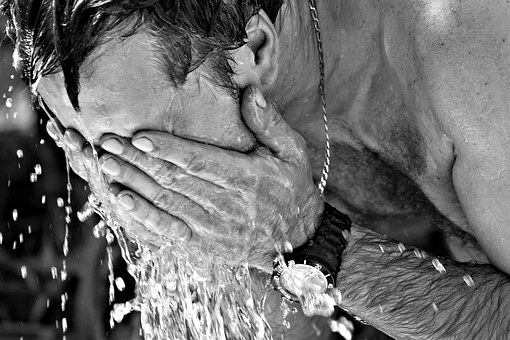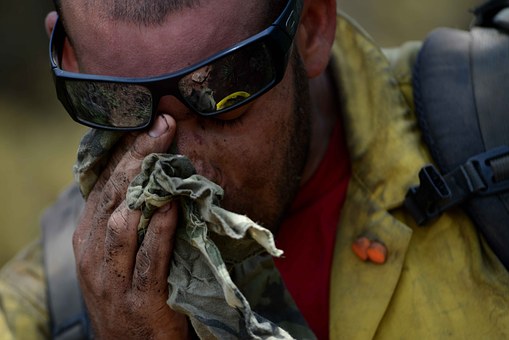In a situation when an individual is exposed to high temperature and gets dehydrated, the person is said to be experiencing heat exhaustion. Heat exhaustion happens to be an illness that is heat related, and it can deteriorate into heat stroke. The condition of heat exhaustion comes in two way, such as water decline and the reduction of salt.
The loss of water comes with signs like migraine, weakness, thirst, and loss of consciousness. The reduction of salt comes with signs like muscle cramps, vomiting, and dizziness. It is imperative to note that the experience of heat exhaustion is not as severe as the case of heat stroke but must be also be taken seriously.
This is because when one has heat exhaustion and takes it lightly, it can progress to heat stroke, which could be very dangerous. It could lead to the damage of some vital organs as well as the brain. So when a person’s body finds it difficult to cool itself, it could lead to heat exhaustion or heat stroke.
Classic Heat Stroke
Heat stroke can be very dangerous and life-threatening as it requires emergency treatment when detected. The case of heat stroke comes in two ways just like heat exhaustion too. There is a classic heat stroke that occurs in weather that is very hot and humid. In this case, the feeling develops gradually over days, and from there, it deteriorates. Heatstroke affects older people and anyone that already has an illness that is heat related. It also affects people that don’t have the capacity to withstand heat.
Exertional Heat Stroke
The other type of heat stroke is exertional heat stroke that occurs when a person is stressed in hot or humid weather or during a hectic exercise. Exertional heat stroke is one of the significant challenges that athletes have such that they sometimes lose their lives. The heat stroke is a type of hyperthermia that causes an abnormal elevation of the body temperature, which is followed by a change in the function of the nervous systems.
The metabolism of the body generates heat, and then the body disperses the heat as it radiates it through the skin or the evaporation of sweat. If the weather is scorching and humid, the body finds the work of dispersing the heat difficult, which leads to the rise in your body temperature. It could be a fatal medical condition that can lead to body temperature rising as high as 104 Fahrenheit and can go higher. The body temperature could even go as high as 106 Fahrenheit depending on the level of the weather. In the situation of dehydration that turns out to be one of the causes of heat stroke, the person might have issues of sweating rapidly enough to disperse the heat properly. You find out that because the individual could not disperse the heat, and his temperature begins to rise.
Signs and Symptoms of Heat Exhaustion and Stroke
The heat exhaustion and heat stroke have multiple symptoms as it develops very quickly over days, which can cause significant distress, and the muscle begins to hurt. The muscle cramps begin at the early stages amidst other symptoms, and then it goes further to a feeling of weakness in the body and weak pulse. Over the cause of the deterioration of the exhaustion to heat stroke, the individual begins to sweat excessively and vomit.

Sometimes you encounter dizziness, which leads to fainting. Severe headaches is another serious sign of heat exhaustion, colored urine, and the skin becomes cold. Stern thirst is another symptom of heat exhaustion and extreme tiredness. Now that the symptoms of heat exhaustion have been reviewed, we would review the symptoms of heat stroke.
Individuals at the Risk of Heat Exhaustion and Stroke
It is essential to know the kind of people that are at risk of having the heat stroke. Heat stroke can affect infants and children or pets left in scorching areas like cars. When people are related to cases of heart disease and kidney disease or are using medication that can lead to dehydration, they are at the risk of having heat exhaustion and stroke also. Athletes also especially the ones that are found plying their trade in very hot regions of the world are also at the risk of developing heat exhaustion and stroke. Other people that are at the risk of having heat exhaustion and heat stroke are the ones that exert themselves under the sun as they work physically outdoor.
Prevention
We all have seen how dangerous heat exhaustion and heat stroke can be, how do we prevent it from happening? Heat exhaustion and heat stroke can be prevented when one avoids getting dehydrated and staying away from doing physical activities that are forceful in hot and humid weather. Ensure that you take recurrent breaks to get yourself rehydrated and where light-colored loosed clothes and hats. Replace lost electrolytes like sodium and take enough fluids if you sweat profusely and works vigorously for an extended period under the sun.
First Aid
There are quick first aid treatments that can be administered to people attacked with heat exhaustion and heat stroke. It is very crucial for victims of heat exhaustion and stroke to get emergency treatment to prevent organ damage.
- The first thing to do is to make such victims feel cool.
- Victims should be taken away from the sun to a shady place
- Sprinkle cool water on the person’s skin just after you remove the person’s cloth
- The victim can also be fanned to encourage sweating and evaporation
- Then, monitor the body temperature of the person
Heat stroke is a critical situation, and its symptoms can get worse very quickly. The person that has heat stroke would experience extremely high temperature and could also have palpitations. Then, agitation and confusion set in as one starts to encounter slurred speech. This can even make the person go into a coma as the possibility of seizure might occur. The heat stroke situation can be as bad as losing consciousness.




